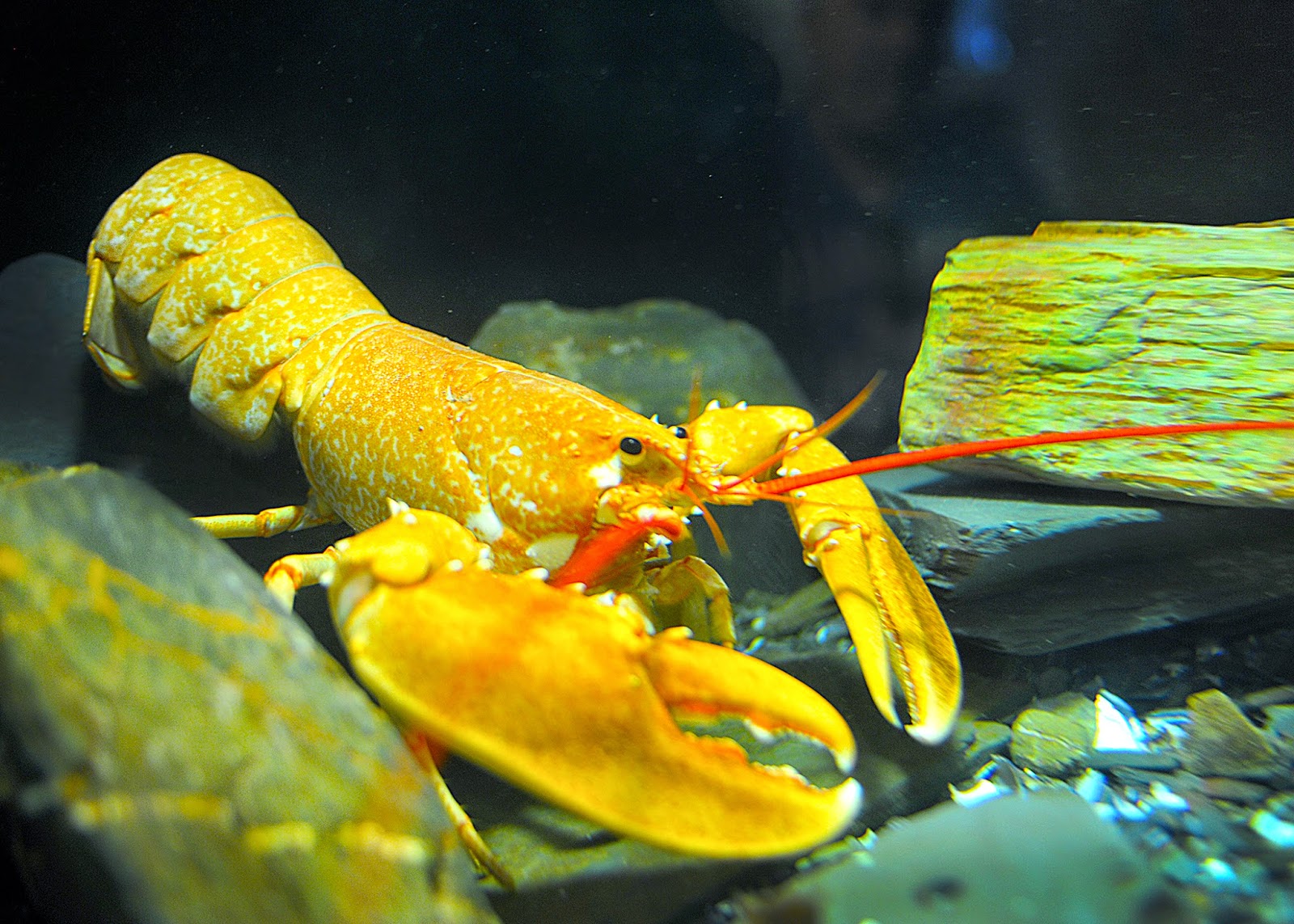"When we started researching it, and really found out how rare it was, we got concerned too," stated Heather Chalmers.
Marybeth Jeitner did not realize that her trip to the Flagler Beach FL Publix this past weekend would end up the way it did. The vegan who never visits the seafood section ended up there after running into friends who told her that there was a rare lobster in the store's sale tank. Jeitner posted photos of the lobster on her Facebook page along with a plea for help in rescuing the crustacean from the dinner plate. Heather Chalmers and her daughter came to her aid by offering her kitchen and tank, so Jeitner purchased the lobster. Libby, short for liberation was on her way out of Publix and now searching for a more permanent home that did not include a side of melted butter.
Jeitner received word that gotmainelobster.com will arrange for Libby to return to Maine and another friend is trying to arrange for a permanent home for the lobster up north. The plan is for Libby to be returned to new England by this coming weekend. Libby is a 1 in 30 million yellow colored lobster. Her discovery comes just days after a fisherman in New Hampshire brought up a 1 in 30-50 million calico colored lobster.
Josiah Beringer found the colorful critter in one of his lobster traps on July 23 2014 while in Hampton Harbor. He stated that he caught the 1 1/2 pound, 5 year old male in the area called Washerwoman Rock. It has been donated to the Explore the Ocean World Oceanarium in Hampton NH where it has already been impressing visitors. It will be exhibited at the Oceanarium until Labor Day and then it will be released back into the ocean.
Lobsters in the Northeast are normally colored a brownish green that allows them to easily blend in with their surroundings and escape predators. They have been found in a variety of other colors over the years. Some of the color varieties have been studied extensively and much of the coloration is caused by the protein beta-crustacyanin and how it bonds with the pigment asraxanthin. If a lobster produces too much astaxanthin, it will end up being colored blue.
The yellow and orange colored lobsters have been found to be producing too little of the protein and pigment. The lobsters that have been found to have split colors, in whatever pattern, have so far, all been hermaphroditic. Not all of the colors of lobsters have been studied and scientists also believe that there may be other reasons for the various colors.
Blue lobsters, which occur about 1 in 2 million lobsters, will only produce more blue lobsters when bred together. Scientists have released populations of them since the 1990's so that they could track their reproduction and lifespans. The waters off Montauk Point NY and Cutler ME were both known for producing a large number of blue lobsters because of the young blue lobsters that had been released there. Scientists are finding more reports of colored lobsters being found in particular areas which may represent a breeding population that has outwitted or lost most of it's natural predators.
Orange colored lobsters are almost as "common" as the blue variety, with scientists guessing that they occur in about 1 in 10 million lobsters. The split varieties of lobsters occur in about 1 in 50 million lobsters and that may be due to their poor breeding and reproduction abilities. The splits can be in a variety of colors and patterns and probably look the oddest to most people.
.jpg)
The most rare color for a lobster is the albino lobster that appears to be white. Like all albinos in the animal kingdom, it lacks pigmentation. Albino lobsters occur about 1 in 100 million lobsters and they are the most vulnerable to being spotted by a predator. All the varieties of lobster except the albino will turn red when cooked and that is because without pigmentation, there can be no color change.
Scientists are not sure why there have been more reports of rare colored lobsters recently but they have their theories. It may be due in part to the increased ability to share pictures and reports of odd lobsters through social media and it may also be due to lower numbers of cod and haddock which prey on them. Whatever the cause, it is always nice to see a lobster of a rare color escape someone's dinner plate.
http://www.wptv.com/news/local-news/water-cooler/marybeth-jeitner-womans-facebook-plea-saves-rare-orange-colored-lobster-from-publix
http://www.foxnews.com/science/2014/07/31/fisherman-finds-1-in-30-million-calico-lobster-donates-it-to-new-hampshire/
http://www.pnas.org/content/99/15/9795.full.pdf
http://newswatch.nationalgeographic.com/2012/07/10/weird-wild-odd-colored-lobsters-decoded/
http://www.csmonitor.com/Science/2012/0723/Odd-colored-lobsters-baffle-scientists-fisherman
http://www.huffingtonpost.com/2012/07/23/colored-lobsters-more-frequently_n_1694378.html
http://newswatch.nationalgeographic.com/2014/08/01/rare-calico-lobsters-oceans-maine-animals-science-oceanarium/









No comments:
Post a Comment